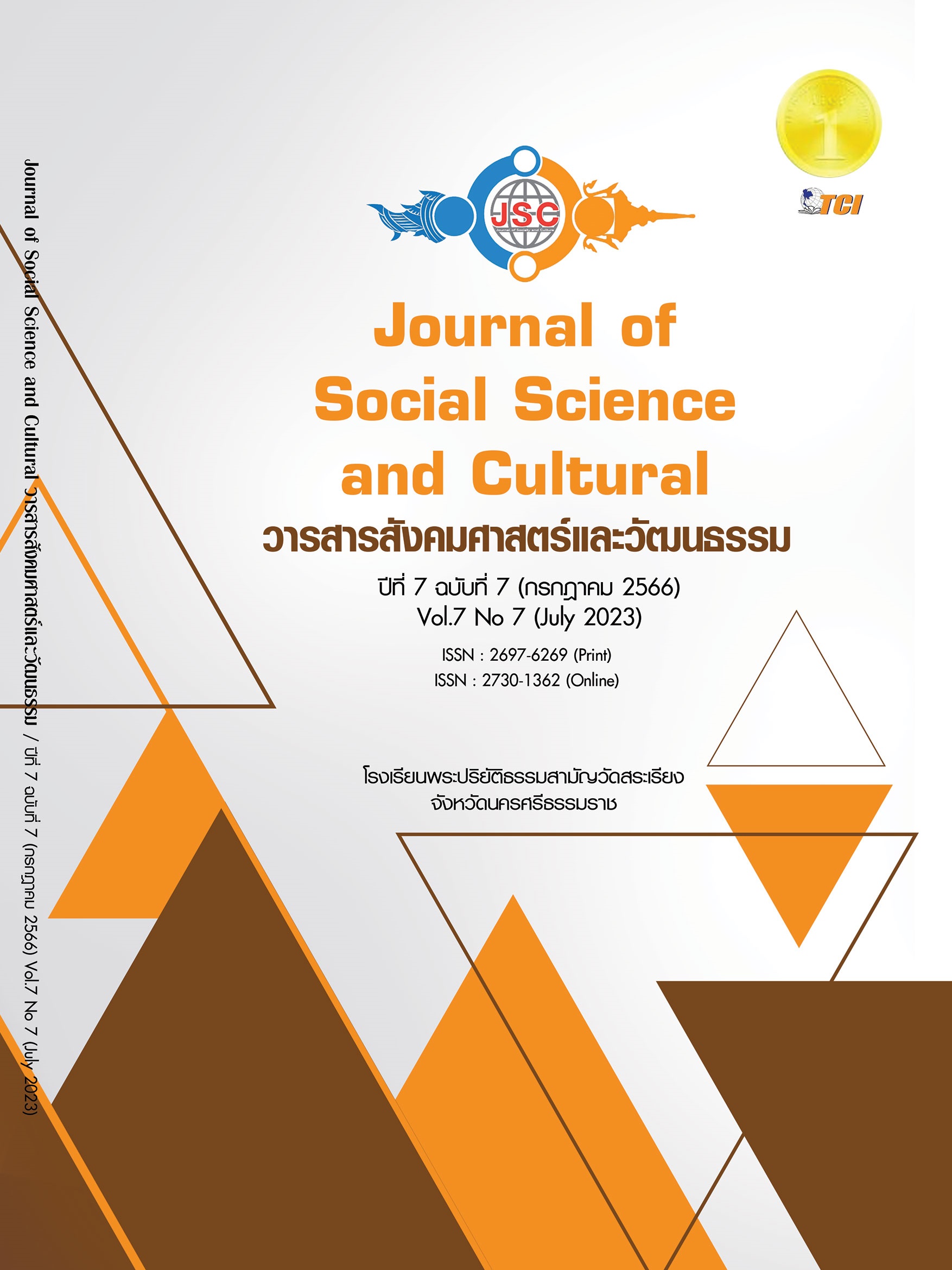FACTOR ANALYSIS OF SUPPLY CHAIN RESILIENCE AFTER THE COVID-19 PANDEMIC IN THAILAND’S INDUSTRY
Main Article Content
Abstract
The spread of the COVID-19 virus has impacts on business operations, both in the manufacturing and tourism sectors, especially supply chain disruptions. This study aimed to explore the components of supply chain resilience, together with verifying the consistency of the empirical data and a confirmatory model of supply chain resilience after the COVID-19 outbreak crisis in Thailand’s industry. The population included registered persons in both the manufacturing and service industries in Thailand. The questionnaire was employed as a research tool. Data were collected from 426 business organizations and analyzed with the confirmed factor analysis (CFA) technique. The results revealed that the supply chain resilience after the COVID-19 pandemics in Thailand's industry consisted of five constructs and 21 indicators. The first construct was technology, and the highest regression weight was providing a system to check the entry and exit of personnel online to reduce the risk of COVID-19 infection. The second construct was flexibility, and the highest regression weight was flexible operations, including ordering raw materials and operating schedules. The third construct was agility, and the highest regression weight was whether a company is able to manage its supply chain operations to comply with its decisions. The fourth construct was collaboration, and the highest regression weight was trust between supply chain partners. The last construct was supply chain resilience, and the highest regression weight was whether a company can easily recover flows of materials and services.
Article Details
References
กรมพัฒนาธุรกิจการค้า. (2565). รายชื่อนิติบุคคลจัดตั้งใหม่และเลิกปี 2564. เรียกใช้เมื่อ 15 มีนาคม 2565 จาก https://www.dbd.go.th/news_view.php?nid =469412361
กรมโรงงานอุตสาหกรรม. (2563). สถิติอุตสาหกรรม ปี 2563. เรียกใช้เมื่อ 15 มีนาคม 2565 จาก https://www.diw.go.th/hawk/content.php?mode=spss63
จิตเกษม พรประพันธ์ และคณะ. (2563). กิจการเสี่ยงและมาตรการดูแลภายใต้ผลกระทบของ โควิด-19. เรียกใช้เมื่อ 15 มีนาคม 2565 จาก https://www.bot.or.th/Thai/ResearchAndPublications/ articles/Pages/Article_30Apr2020.aspx
สำนักงานสภาพัฒนาการเศรษฐกิจและสังคมแห่งชาติ. (2563). แผนการฟื้นฟูเศรษฐกิจและสังคมจากผลกระทบของไวรัสโควิด-19. เรียกใช้เมื่อ 15 มีนาคม 2565 จาก http://nscr.nesdb.go.th/wp-content/uploads/2020/07/แผนฟื้นฟูเศรษฐกิจและสังคมหลังโควิด-แก้หน.pdf
Belhadi, A. et al. (2021). Manufacturing and service supply chain resilience to the COVID-19 outbreak: Lessons learned from the automobile and airline industries. Technological Forecasting and Social Change, 163(2021), 120447.
Bentler, P. M. (1990). Comparative fit indexes in structural models. Psychological Bulletin, 107(2), 238-246.
Chowdhury, M. M. H. & Quaddus, M. (2017). Supply chain resilience: Conceptualization and scale development using dynamic capability theory. International Journal of Production Economics, 188(June 2017), 185-204.
Comrey, A. L. & Lee, H. B. (2013). A first course in factor analysis. . New York: Psychology press.
Cronbach, L. J. (1951). Coefficient alpha and the internal structure of tests. psychometrika, 16(3), 297-334.
Dubey, R. et al. (2021). Empirical investigation of data analytics capability and organizational flexibility as complements to supply chain resilience. International Journal of Production Research, 59(1), 110-128.
Gölgeci, I. & Kuivalainen, O. (2020). Does social capital matter for supply chain resilience? The role of absorptive capacity and marketing-supply chain management alignment. Industrial Marketing Management, 84(January 2020), 63-74.
Hair, J. F. et al. (2006). Multivariate data analysis. 6th Edition. New Jersey: Prentice Hall.
Hooper, D. C. (2010). Structural equation modelling: guidelines for determining model fit. The electronic journal of business research methods, 6(1), 53-60.
Hosseini, S. et al. (2019). Review of quantitative methods for supply chain resilience analysis. Transportation Research Part E: Logistics and Transportation Review, 125(May 2019), 285-307.
Ivanov, D. & Dolgui, A. (2020). Viability of intertwined supply networks: extending the supply chain resilience angles towards survivability. A position paper motivated by COVID-19 outbreak. International Journal of Production Research, 58(10), 2904-2915.
Ivanov, D. (2022). Viable supply chain model: integrating agility, resilience and sustainability perspectives—lessons from and thinking beyond the COVID-19 pandemic. Annals of operations research, 319(1), 1411-1431.
Kilic, A. et al. (2020). Comparison of Confirmatory Factor Analysis Estimation Methods on Binary Data. International Journal of Assessment Tools in Education, 7(3), 451-487.
Marsh, H. W. et al. (2004). In search of golden rules: Comment on hypothesis-testing approaches to setting cutoff values for fit indexes and dangers in overgeneralizing Hu and Bentler's (1999) findings. Structural equation modeling, 11(3), 320-341.
Rajesh, R. (2021). Flexible business strategies to enhance resilience in manufacturing supply chains: An empirical study. Journal of Manufacturing Systems, 60(2021), 903-919.
Remko, V. H. (2020). Research opportunities for a more resilient post-COVID-19 supply chain-closing the gap between research findings and industry practice. International Journal of Operations & Production Management, 40(4), 341-355.
Rovinelli, R. J. (1976). Methods for Validating Criterion-Referenced Test Items. In Doctoral Dissertation, The Degree Of Doctor Of Philosophy. University of Massachusetts Amherst.
Sabahi, S. & Parast, M. M. (2020). Firm innovation and supply chain resilience: a dynamic capability perspective. International Journal of Logistics Research and Applications, 23(3), 254-269.
Scholten, K. & Schilder, S. (2015). The role of collaboration in supply chain resilience. Supply Chain Management: An International Journal, 20(4), 471-484.


